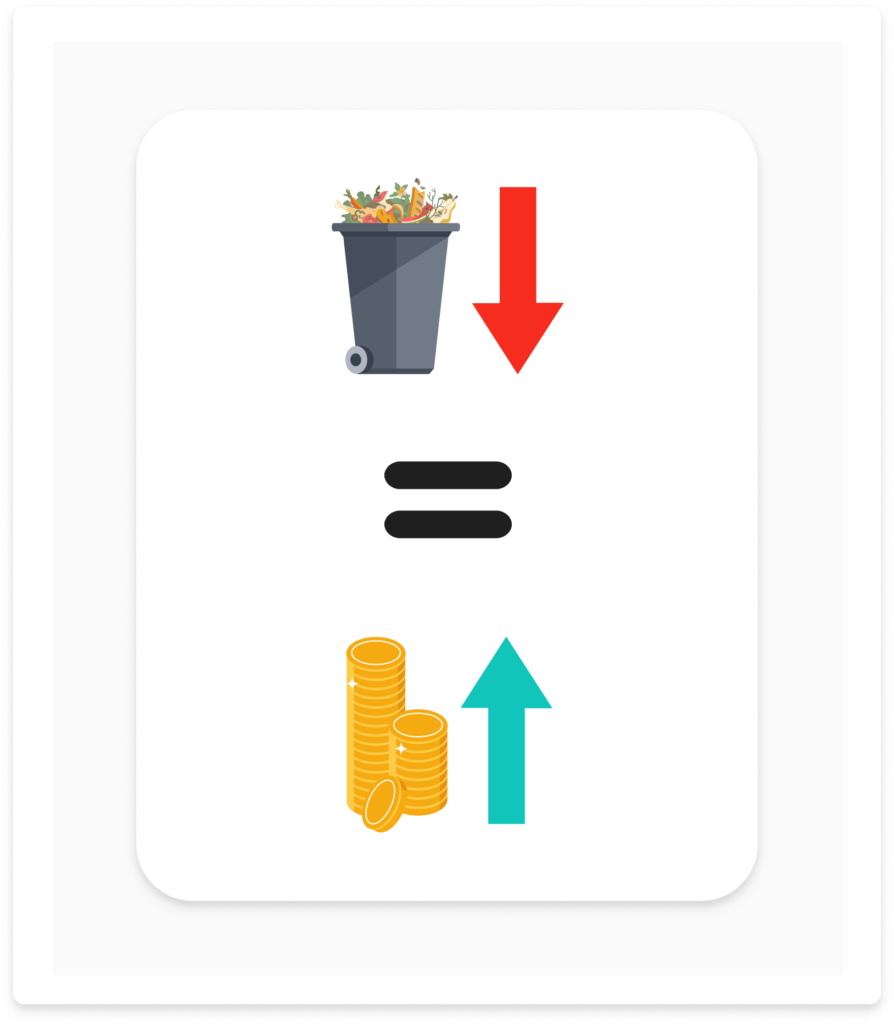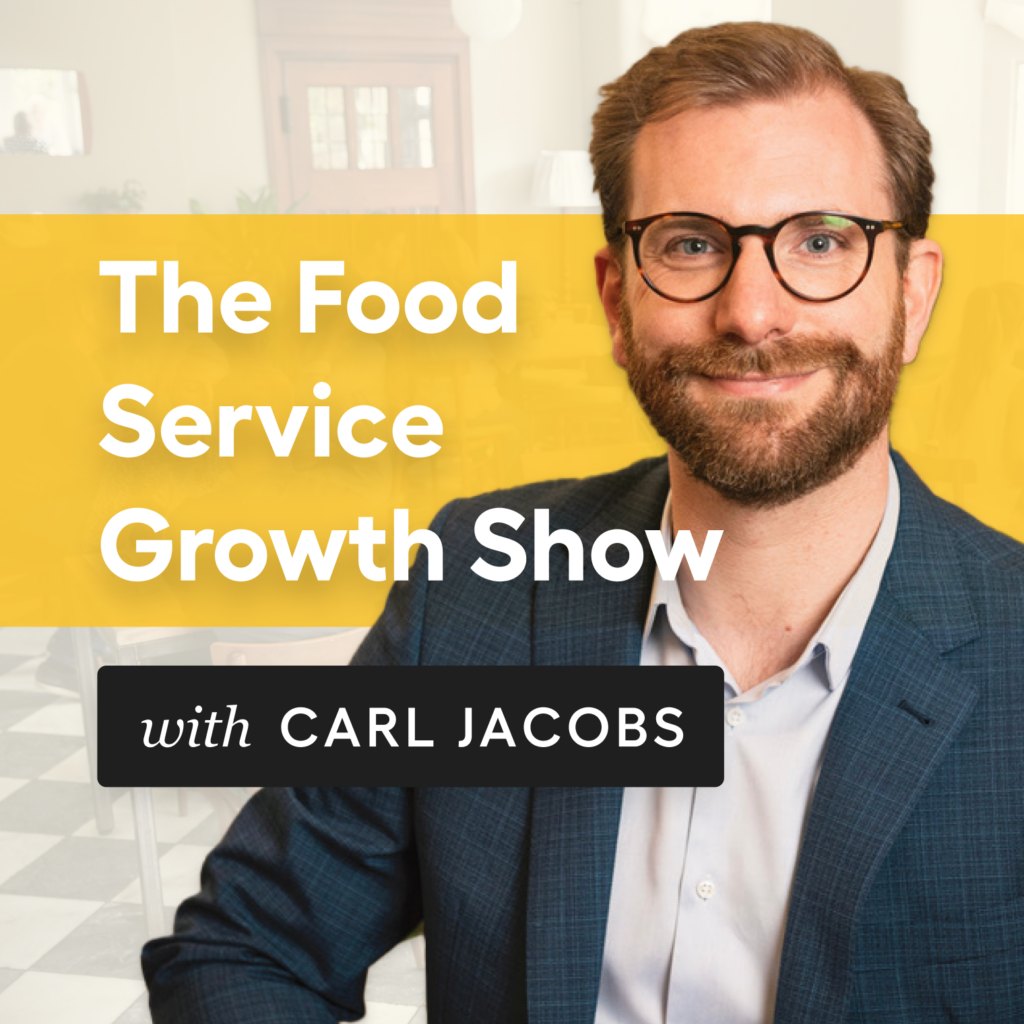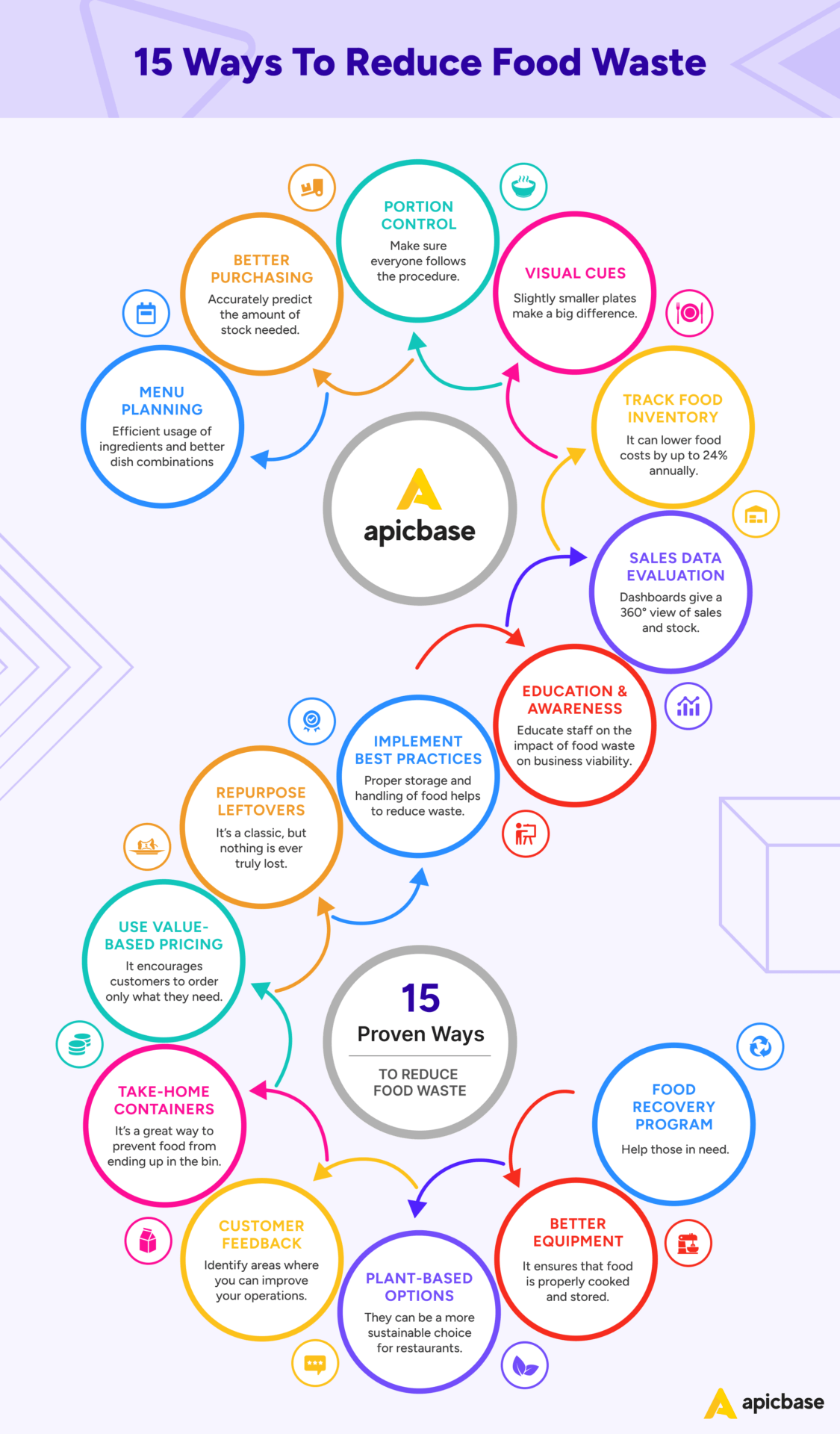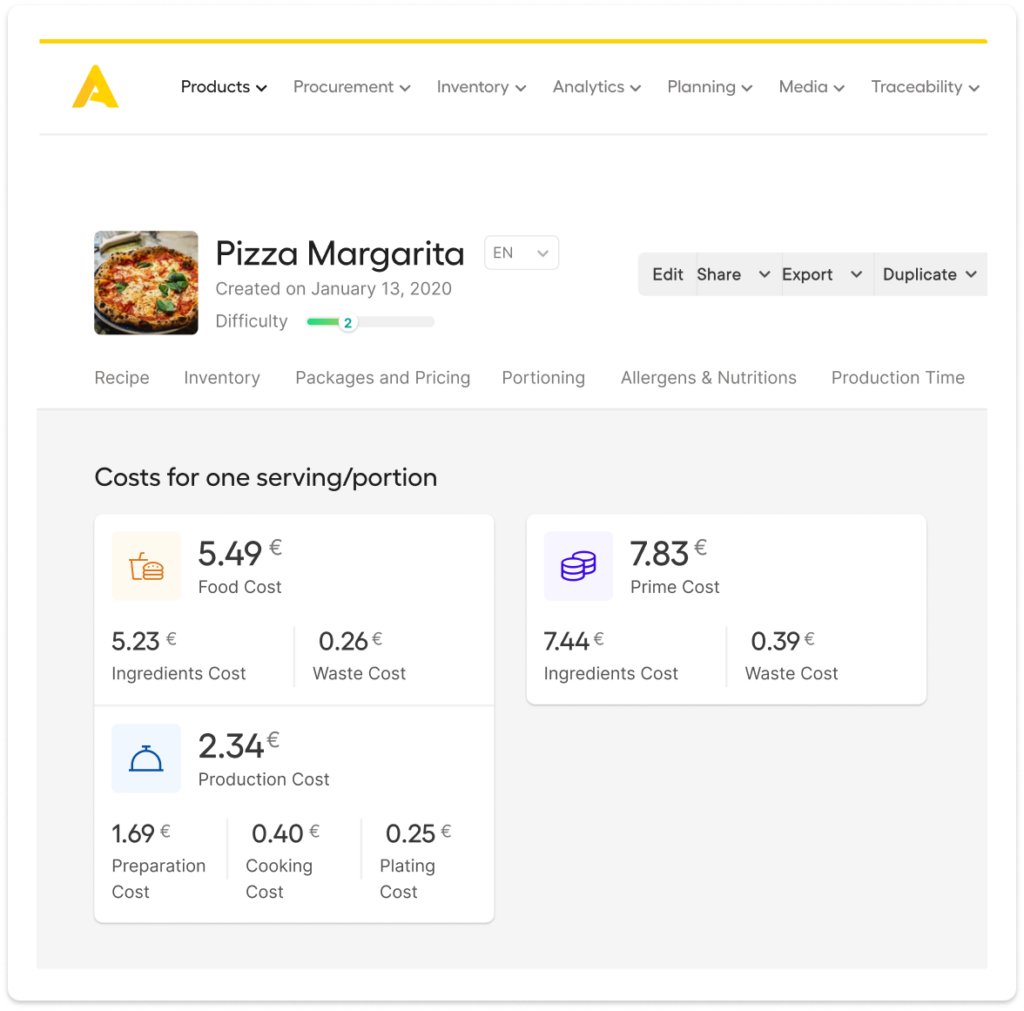Every report on food waste is a jaw-dropper.
Food waste is a monumental problem with massive consequences.
An estimated 32% of all food produced worldwide is lost or wasted from farm to fork (some reports even say between 40-50%).
This inefficiency has a gigantic economic, social and environmental impact. Let’s focus on the economy for a sec. Food loss and waste represent about $940 billion in annual economic losses.
940,000,000,000: that’s a staggering amount of lost revenues.
Of that amount, 14% can be attributed directly to the restaurant and food service industry in the EU.
Apart from being an ecological disaster, it’s an outright drain on restaurant margins. It’s no wonder that the question “How to reduce food waste in restaurants?” is on everyone’s mind.
But this article isn’t all bad news. Quite the opposite.
Food costs, on average, account for 28-35% of sales. Prevention of food waste can save up to 4.2% on food costs.
Imagine that money going to your bottom line every week, instead of to a landfill?
Some argue that it would instantly offset rising food and beverage prices due to inflation or other causes. We agree. The reduction of food waste in restaurants would mean a world of difference to an industry that is under constant pressure.
Need proof? Let’s do the maths.
What would be the effect of food waste prevention on a restaurant’s profits? Let’s assume the store’s food cost percentage is 32%. Measures to curb waste have resulted in a 4.2% drop in the CoGS.

In the example, the result goes up by a whopping 49%. The accumulative effects are massive. It’s a number that should already encourage everyone to kick their food waste programme into high gear. But for clarity, let’s add a figure from another study.
Restaurants save $7 for every $1 invested in fighting food waste.
A study by Champions 12.3 concluded that, on average, restaurants save $7 for every $1 invested in reducing food waste in their kitchens. With an ROI of 700%, it’s an investment worth making.
In this article, we unpack how to fight food waste in your restaurants – and grow your bottom line – while helping the environment.
Let’s get started right away.
After reading this post, you’ll be able to determine the areas you want to focus on (see causes for food waste) and map out your company’s path to less F&B waste (see ‘how to’-section).

Start Your Fight Against Food Waste
Apicbase tracks ingredient usage, helps development chefs create efficient menus, and streamlines F&B purchases at your stores.
What Causes Food Waste In Restaurants?

- The Classic — Overproduction.
When a restaurant produces more than needed to meet customer demand, it ends up with excess food that goes to waste. It can feel like overproduction is an inevitable part of running a restaurant business. The reality is, it’s an inefficiency, and it can be curbed.
- The Killer — Poor inventory management.
If a restaurant doesn’t have a system to track the quantities of food on hand, it will over-order or keep too much security stock. As a result, they end up with excess food that spoils before it can be used. Inventory management should be chapter one in every restaurant manual, because when it’s not, it will kill profit margins faster than a tornado in a china shop.
- The Shame — Expired or spoiled food.
Food spoils if it is not stored correctly or used before its expiration date. Every item in your fridges is company money locked up in perishable goods. Your staff throws money in the bin when items spoil (see poor inventory management), which is, well, shameful.
- The Balancing Act — Customer preferences.
Some customers won’t finish their meals or request specific ingredients not used in other dishes, leading to food waste. The customer is king, but there are limits to what a king can demand. Restaurants should carefully evaluate their menu without losing sight of the commercial aspect.
- The Undisciplined — Poor portion control.
If the kitchen staff doesn’t accurately portion the food, the restaurant will end up with excess food that goes to waste. Not to mention that your food cost calculation immediately become useless, theoretical profit margins a wild guess, and there is zero chance of estimating the food cost variance, let alone closing the gap between theoretical and actual costs.
- The Unexpected — Unforeseen events.
Unforeseen events, such as a power outage or a sudden drop in customer traffic, lead to food waste. A few rainy days in an otherwise sunny month are kryptonite for the restaurant industry. It can plummet footfall, spoiling F&B stock because it can’t be sold.
- The Fool — Aesthetic standards.
Some restaurants throw away food that doesn’t meet certain aesthetic standards, even if it is still safe to eat. That’s dumb.

Reducing food waste in your restaurants
🎤 Episode 7 – Franco Pontera and Carl Jacobs, discuss the impact of food waste, different strategies to prevent waste from happening, and how better data is accelerating a waste-free industry.
How To Reduce Food Waste In Restaurants?
Multi-site restaurants have an incredible opportunity to reduce food waste, from smart portion control strategies and meticulous inventory tracking to creative recipe ideas that use surplus ingredients.
The three pillars of food waste reduction are prevention, reusing and recycling. It’s the so-called food and drink waste hierarchy. Prevention, through minimisation of food surplus and avoidable food waste, is the most attractive option. It’s the one we’ll focus on.

- Menu planning — Restaurants can reduce food waste by carefully engineering menus. Not only will it generate popular and profitable menus, but crafting well-thought-out dishes also means optimising ingredient usage, which will benefit you when negotiating with suppliers.
- Better Purchasing — Accurately predicting the amount of food needed massively reduces over-purchasing, a major contributor to food waste. Kitchen staff often creates purchase orders based on what they usually order, without taking current stock levels or sales into account. Restaurant procurement software allows your employees to make better purchasing decisions, even the inexperienced ones.
- Portion control — Appropriate portions ensure you don’t serve more than customers can eat in one sitting. The recipes should clearly show the correct portion sizes. Also, it’s essential to monitor kitchen staff in following the recipe guidelines (recipe management software will ensure they do). You can’t go wrong with measuring equipment. Measuring spoons, cups, and scales are great tools to keep staff alert. Above all, it’s vital to train your staff to portion correctly. You’ll reduce food waste and save a lot (like a lot, a lot) of money.
- Visual cues — Visual cues like smaller plates can help restaurants serve appropriate portions and reduce waste. Customers can customise their meals with innovative side dishes at an extra cost. This will generate less waste and a bigger average ticket size.
- Track and manage food inventory — Restaurants that use food inventory management software to track what food enters the restaurant and when it’s used or wasted are dramatically reducing food waste in their kitchens. Inventory tech helps restaurants to lower their food costs by up to 24% annually.
- Sales data evaluation — when a foodservice operation doesn’t evaluate sales numbers scrupulously, they inevitably end up with menu items that don’t generate enough turnover to justify the purchase of the ingredients. Yet, they remain on the menu, so the chefs keep ordering. Solid analysis demands time, experience and a lot of spreadsheets. That’s why growth-minded businesses deploy restaurant analytics software. It takes away the Excel-headaches and instead offers dashboards that clarify the sales and inventory figures.
- Education and awareness — Restaurants can work to reduce food waste by educating employees and customers about the importance of reducing waste and the environmental impact of food waste. Knowing the impact of food waste on the environment and the bottom line (which ultimately determines whether a restaurant can continue to pay staff salaries) motivates employees to be alert to potential food waste in their operations.
- Implement best practices — Proper storage and handling of food helps to reduce waste. This includes keeping refrigerators and freezers at the proper temperature, storing raw and cooked foods separately, and using rotation systems to ensure food is used before it expires.
- Repurpose leftovers — Restaurants can get creative with leftovers by using them in new dishes. For example, the leftover roast beef could be used to make sandwiches or beef stew.
- Use value-based pricing — Instead of fixed prices for menu items, restaurants can use value-based pricing. In this case, the pricing reflects the perceived value of a menu item. It encourages customers to order only what they need. This can help to reduce waste.
- Offer take-home containers — At this point, we are no longer preventing food waste from happening. The dish is already with the customer. There is not much you can do now. Many customers, however, are willing to take leftovers home with them. That way, your food might get eaten at a later point. Take-home containers are a great way to prevent food from ending up in the bin. That said, when customers regularly struggle to finish their meals, it is wise to re-evaluate portions or check whether cooks are still following the recipes.
- Use customer feedback to improve operations — Restaurants can use it to identify areas where they can improve their operations and reduce waste. It’s a bit on the nose, but if, for example, customers frequently complain about the portion sizes, you should consider offering smaller portion sizes.
- Offer plant-based options — Plant-based options can be a more sustainable choice for restaurants, as plant-based foods generally have a lower environmental impact than animal-based foods. Offering a variety of plant-based options might not reduce food waste directly, but will have a positive impact on the environment.
- Invest in better equipment — Energy-efficient equipment, such as refrigerators and ovens, can help to reduce food waste by ensuring that food is cooked and stored at the proper temperature.
- Implement a food recovery program — A food recovery program helps restaurants to donate excess food to those in need, rather than throwing it away. This can be a win-win, as it helps to reduce waste and support the community.
Restaurant inventory software helps to boost profits by 24% annually.
Cut Food Waste and Boost Profitability With Apicbase

If you own or operate a multi-site restaurant chain, you know first-hand the challenges of managing inventory and reducing food waste across multiple locations. Apicbase helps you address these challenges and make a significant impact on your bottom line.
With Apicbase, you can centralise and streamline your inventory management processes, including ordering suggestions based on actual stock levels and sales data. This will ensure that your restaurants have the right amount of food on hand, minimising the risk of spoilage or waste.
In addition, Apicbase’s recipe creation and costing tools allow you to accurately track and optimise the use of ingredients, ensuring that nothing goes to waste. This will help you save money on food costs and reduce waste throughout your restaurant chain.
Major restaurant and food service operations worldwide use Apicbase’s inventory management, and recipe creation tools to manage their resources and improve profitability effectively.
By reducing waste, you will not only save money on food costs, but also demonstrate your commitment to sustainability and social responsibility to your customers. It is a win-win situation for your business and the environment.

Get In Touch Today
Apicbase helps you keep track of your ingredients, develop efficient menus and plan food purchases accurately, so your stores never over-stock or waste food.

